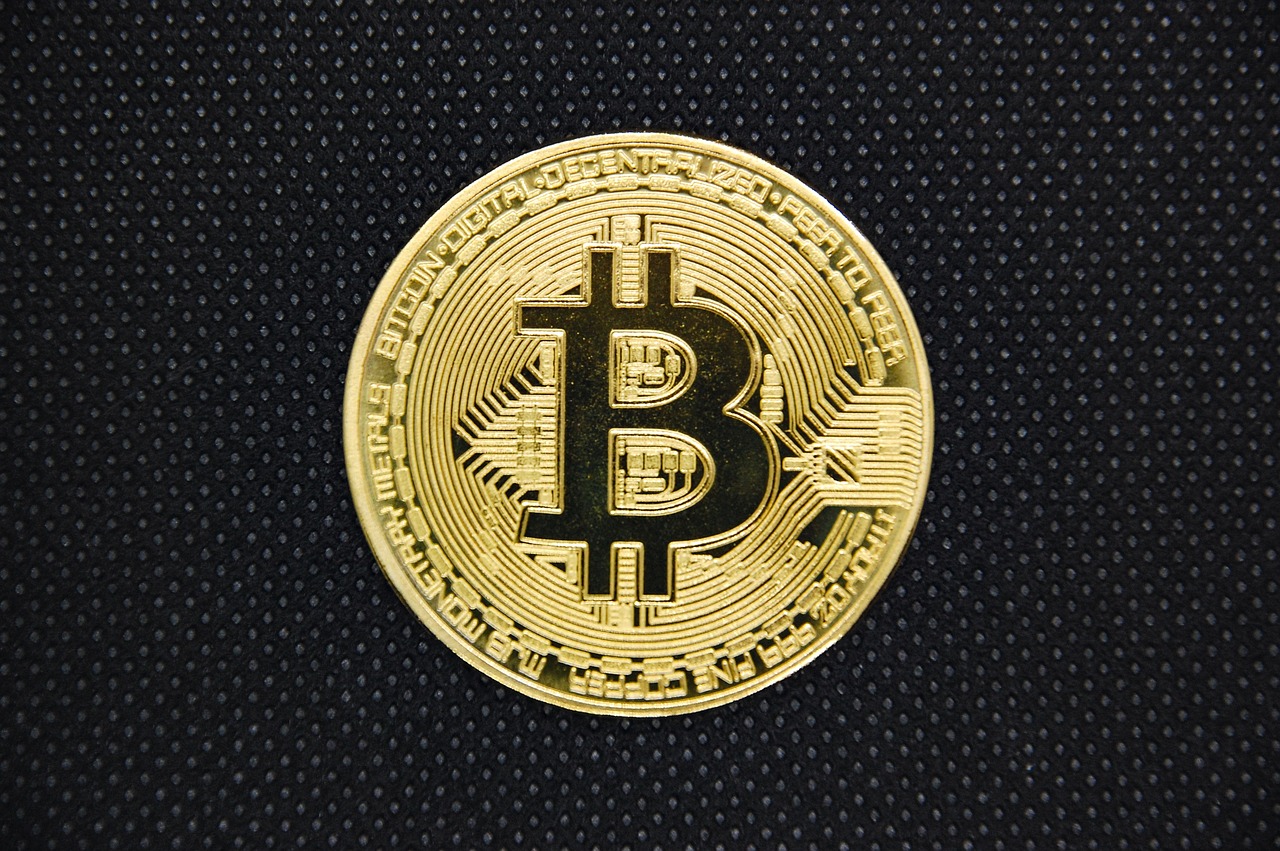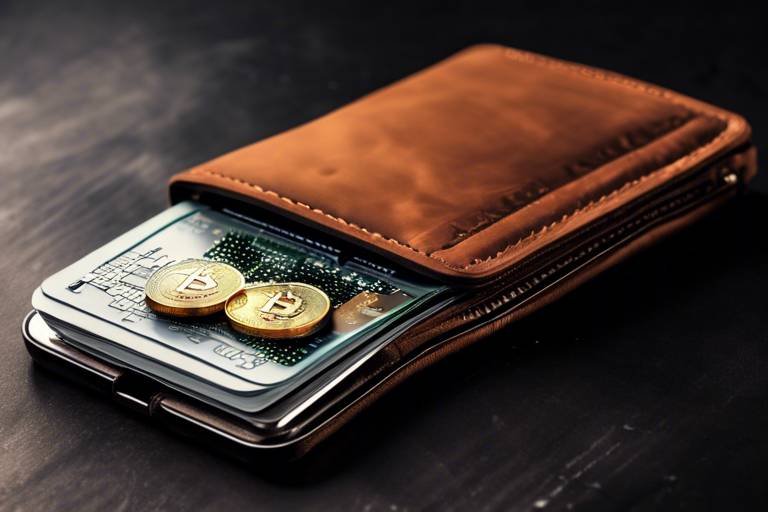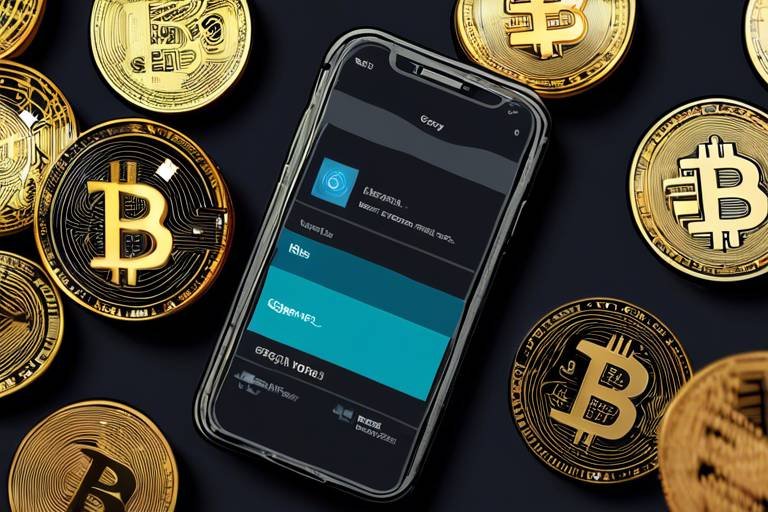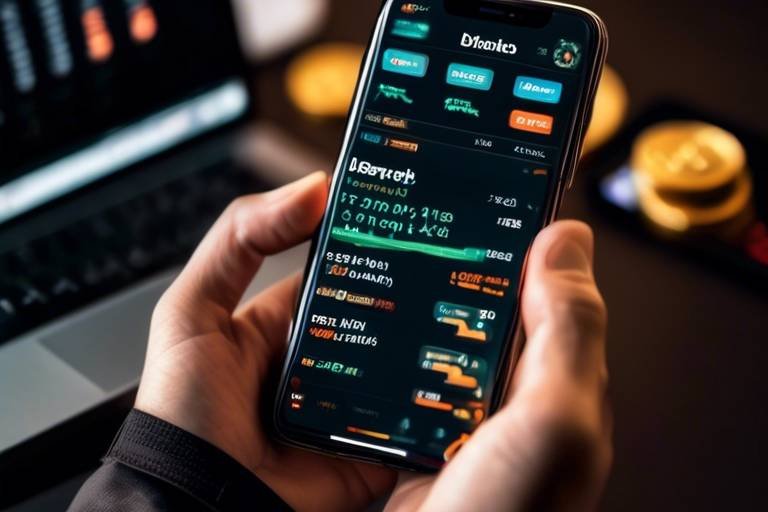How to Navigate Wallet Fees - What You Should Expect
In today's digital age, managing your finances often means dealing with various digital wallets. As you dive into this world, one crucial aspect that you must grasp is wallet fees. These fees can sometimes feel like a hidden trap, sneaking up on you when you're least expecting it. But don't worry! In this article, we’ll unpack everything you need to know about wallet fees, including their types, factors that influence them, and practical tips to minimize your expenses.
So, what exactly are wallet fees? Simply put, these are charges incurred when using a digital wallet to send, receive, or withdraw funds. Understanding these fees is essential because they can significantly affect how much you ultimately spend or save while managing your digital assets. Just like a toll on a highway, these fees can vary widely based on the route you choose. Some wallets might charge higher fees than others, and knowing these differences can help you make smarter financial decisions.
As we explore the intricacies of wallet fees, you'll find that they come in various forms, and each type has its own implications. From transaction fees to withdrawal fees, each cost can impact your overall financial strategy. By the end of this article, you’ll not only understand what these fees are but also how to navigate them effectively.
Ready to dive deeper? Let’s break down the different types of wallet fees that you might encounter on your financial journey. Trust me, understanding these will empower you to take control of your digital finances!

Understanding Wallet Fees
When diving into the world of digital assets, one of the first things you'll encounter are wallet fees. But what exactly are these fees, and why should you care? Simply put, wallet fees are the costs associated with using a digital wallet to send, receive, or manage your cryptocurrencies. Just like a toll road charges you to drive through, wallets charge fees to facilitate transactions on the blockchain. Understanding these fees is essential for anyone looking to maximize their investment and minimize unnecessary expenses.
Wallet fees can vary significantly based on several factors, including the type of wallet you're using, the current state of the network, and even the specific cryptocurrency involved. For instance, if you're using a popular wallet during a peak transaction period, you might find yourself paying higher fees due to network congestion. In contrast, during quieter times, fees may drop substantially, allowing you to save money. It’s a bit like catching a flight; prices fluctuate based on demand, and knowing when to make your move can save you a pretty penny.
Moreover, not all wallets are created equal. There are hot wallets, which are online and often more convenient for day-to-day transactions, and cold wallets, which are offline and provide enhanced security for long-term storage. Each type comes with its own fee structure, impacting how much you’ll pay to access your funds. Understanding these distinctions is crucial for effective financial management in the digital realm.
In summary, wallet fees are an unavoidable aspect of managing digital assets. By grasping the basics of what these fees entail, you can make informed decisions that not only enhance your user experience but also help you keep more of your hard-earned money in your pocket. So, the next time you consider a transaction, take a moment to evaluate the fees involved, just as you would when planning a road trip. After all, knowledge is power, especially in the fast-paced world of cryptocurrencies!

Types of Wallet Fees
When diving into the world of digital wallets, it's crucial to understand that not all fees are created equal. Wallet fees can be as varied as the digital currencies they hold, and knowing the different types can save you both time and money. Generally, there are three main categories of wallet fees that users should be aware of: transaction fees, withdrawal fees, and maintenance fees. Each of these fees serves a specific purpose and can significantly impact your overall experience with managing digital assets.
Transaction fees are perhaps the most common type you'll encounter. These fees are charged whenever you send or receive funds through your wallet. Depending on the wallet provider and the network conditions at the time of the transaction, these fees can fluctuate. For example, during times of high network congestion, transaction fees may spike, making it more expensive to send funds. It's essential to keep an eye on these fees, especially if you're making frequent transactions.
Next up are withdrawal fees. These fees come into play when you transfer funds from your wallet to your bank account or another wallet. Depending on the wallet service you use, these fees can vary significantly. Some wallets may offer free withdrawals, while others might charge a flat fee or a percentage of the total amount being withdrawn. It's advisable to check the withdrawal fee structure before committing to a particular wallet, as these costs can add up over time.
Lastly, we have maintenance fees, which are less common but still worth noting. These fees are typically charged by wallets that offer additional features or services, such as enhanced security or customer support. Maintenance fees can be charged monthly or annually and may vary based on the level of service provided. If you're using a wallet that has a maintenance fee, make sure to weigh the benefits against the costs to determine if it's worth it for your specific needs.
To give you a clearer picture, here's a quick breakdown of the different wallet fees:
| Type of Fee | Description | Typical Range |
|---|---|---|
| Transaction Fees | Fees charged for sending or receiving funds. | Varies (can be as low as $0.01 or much higher during congestion) |
| Withdrawal Fees | Fees for transferring funds to a bank account or another wallet. | $0 - $10 (depends on wallet provider) |
| Maintenance Fees | Fees for additional services or features offered by the wallet. | $0 - $100/year (depending on services) |
Understanding these types of wallet fees can empower you to make informed decisions about which wallet to use. By being aware of the potential costs associated with each type of fee, you can better manage your digital assets and avoid any unpleasant surprises down the road. Remember, the goal is to keep your transactions as cost-effective as possible while enjoying the convenience that digital wallets offer.

Transaction Fees
When it comes to managing your digital assets, understanding is crucial. These fees are charged whenever you send or receive funds, and they can vary greatly depending on several factors. Imagine you're at a restaurant and the bill comes with a service charge; transaction fees work similarly in the world of digital wallets. They are a necessary cost of doing business in the crypto world, but they don't have to break the bank.
Transaction fees are calculated based on the network demand and the size of the transaction in bytes. For instance, during peak times when the network is congested, fees can skyrocket, making it feel like you’re paying a premium for a simple transfer. On the flip side, during quieter periods, fees tend to be lower, which is why timing can be everything. To give you a clearer picture, here's a quick breakdown:
| Network Condition | Estimated Fee |
|---|---|
| Low Congestion | $0.10 - $0.50 |
| Moderate Congestion | $0.50 - $2.00 |
| High Congestion | $2.00 - $10.00+ |
It's important to note that different wallets may have different fee structures. Some wallets might charge a flat fee for transactions, while others might charge a percentage of the transaction amount. This can significantly affect how much you end up paying, especially for larger sums. For example, if you're using a wallet that charges a 1% fee and you send $1,000, you’ll be looking at a $10 fee, which can be quite steep compared to a flat rate.
In addition to understanding how transaction fees are calculated, it’s essential to recognize that there are two main types of transaction fees: dynamic fees and fixed fees. Dynamic fees fluctuate based on network conditions, while fixed fees remain constant regardless of the transaction size or network congestion. Knowing which type your wallet uses can help you strategize your transactions better. If you’re in a hurry and need to send funds immediately, a dynamic fee might be higher, but it can also ensure your transaction is processed faster.
So, how can you navigate the world of transaction fees effectively? Start by staying informed about the current network conditions and plan your transactions accordingly. If you can afford to wait, try to send or receive funds during off-peak hours to minimize costs. Additionally, consider using wallets that offer lower fees or those that allow you to customize your fee settings. By being proactive and informed, you can significantly reduce the amount you pay in transaction fees, allowing you to keep more of your hard-earned digital assets.

Dynamic vs. Fixed Fees
When it comes to wallet fees, understanding the distinction between dynamic and fixed fees is crucial for anyone managing digital assets. These two fee structures can significantly impact how much you pay when sending or receiving funds. So, what exactly do these terms mean? Let’s break it down.
Fixed fees are straightforward; they remain constant regardless of the transaction size or network conditions. For example, if you’re using a wallet that charges a fixed fee of $1 for transactions, you’ll pay this amount every time you send or receive funds, no matter how busy the network is or how much cryptocurrency you’re moving. This predictability can be comforting, especially for users who want to budget their expenses.
On the other hand, dynamic fees fluctuate based on various factors, including network congestion and the urgency of the transaction. Think of it like surge pricing for ride-sharing services; when demand is high, so are the fees. For instance, during peak times when many users are trying to send transactions, the fees can skyrocket, making it more expensive to move your assets. This variability can be a double-edged sword: while it allows for lower costs during less busy times, it can also lead to unexpected expenses when the network is congested.
| Feature | Fixed Fees | Dynamic Fees |
|---|---|---|
| Cost Predictability | High | Low |
| Influence of Network Conditions | No | Yes |
| Typical Use Case | Regular transactions | High-demand periods |
In summary, the choice between dynamic and fixed fees often depends on your transaction habits and the level of flexibility you’re comfortable with. If you prefer knowing exactly what you'll pay every time, fixed fees might be the way to go. However, if you're willing to navigate the ups and downs of network conditions for potentially lower costs, dynamic fees could be advantageous. Ultimately, understanding these fee structures will empower you to make better decisions when managing your wallet and digital assets.

Fee Structures Across Wallets
When it comes to managing your digital assets, understanding the fee structures across different wallets is crucial. Each wallet has its own unique way of charging fees, which can significantly impact your overall experience. Some wallets may charge a flat fee for transactions, while others might implement a percentage-based fee structure. This variability can make it challenging for users to predict their costs accurately.
For instance, let’s consider a few popular digital wallets and how they handle fees:
| Wallet Type | Transaction Fee | Withdrawal Fee | Maintenance Fee |
|---|---|---|---|
| Wallet A | 1% of transaction amount | $2.00 | None |
| Wallet B | Fixed $0.50 | 1.5% of withdrawal | $5.00/month |
| Wallet C | Variable (depends on network conditions) | $1.00 | None |
As you can see in the table, Wallet A charges a percentage-based fee, which could be more economical for smaller transactions but can add up quickly for larger ones. On the other hand, Wallet B’s fixed fee structure may seem appealing for larger transactions, but the withdrawal fee can eat into your profits. Wallet C’s variable fees depend on network conditions, which can lead to unpredictable costs, especially during peak times.
Moreover, it's essential to consider any hidden fees that may not be immediately evident. Some wallets might advertise low transaction fees but could impose higher withdrawal fees or monthly maintenance fees, which can catch users off guard. Always read the fine print and understand all potential costs associated with a wallet before committing.
In conclusion, when choosing a wallet, it’s vital to compare the fee structures and consider not just the transaction fees but also withdrawal and maintenance fees. Doing your homework will save you money and frustration in the long run. Make sure to evaluate your usage patterns and select a wallet that aligns with your financial habits and needs.
- What are wallet fees? Wallet fees are charges associated with using digital wallets, including transaction, withdrawal, and maintenance fees.
- How can I minimize wallet fees? You can minimize wallet fees by choosing wallets with favorable fee structures, conducting transactions during off-peak times, and being aware of hidden fees.
- Are all wallets the same in terms of fees? No, different wallets have varying fee structures, so it's essential to compare them before selecting one.
- What type of wallet is best for minimizing fees? It depends on your usage. Some users prefer wallets with low transaction fees, while others might benefit from wallets with no maintenance fees.

Withdrawal Fees
Withdrawal fees are an important aspect of managing your digital assets, often overlooked until it’s time to move funds. When you decide to transfer money from your wallet to a bank account or another wallet, you might encounter these fees, which can vary significantly depending on several factors. Understanding these fees is crucial because they can eat into your profits or savings, especially if you’re making frequent transactions. So, what should you watch out for when it comes to withdrawal fees?
First off, it’s essential to recognize that withdrawal fees can differ based on the wallet provider and the method of withdrawal. For instance, some wallets may charge a flat fee for withdrawals, while others might take a percentage of the amount being withdrawn. This percentage can be particularly burdensome for smaller transactions. Consider the following table that illustrates the potential differences:
| Wallet Provider | Withdrawal Method | Fee Structure |
|---|---|---|
| Wallet A | Bank Transfer | $2.50 flat fee |
| Wallet B | Bank Transfer | 1.5% of amount |
| Wallet C | Crypto Transfer | 0.002 BTC per transaction |
As you can see, the fee structures can vary greatly. This disparity makes it crucial for users to do their homework before committing to a specific wallet. Additionally, some wallets may offer free withdrawals up to a certain limit, after which standard fees apply. Always check the terms and conditions to avoid any surprises!
Another factor to consider is the speed of withdrawal. Some wallets may offer expedited withdrawal options for an additional fee. If you need your funds quickly, you might be willing to pay a bit more to get them sooner. However, if you can wait, opting for the standard withdrawal process can save you some cash.
Lastly, keep an eye on the network fees associated with your withdrawal. These fees are not charged by the wallet itself but are instead related to the blockchain network's congestion at the time of your transaction. During peak times, these fees can spike significantly, making it a costly endeavor to withdraw funds. To mitigate this, consider withdrawing during off-peak hours when transaction costs tend to be lower.
In conclusion, withdrawal fees are an unavoidable part of managing digital assets. By understanding how these fees work, what influences them, and the different structures across wallet providers, you can make informed decisions that can save you money in the long run. Always remember to read the fine print and consider your options carefully before making a withdrawal!

Factors Affecting Wallet Fees
When it comes to wallet fees, several factors can significantly influence the costs you incur while managing your digital assets. Understanding these factors is crucial for making informed decisions and optimizing your wallet experience. One of the primary factors is network congestion. Just like rush hour traffic, when too many transactions are happening at once, the fees can spike. When the network is busy, miners or validators prioritize higher-fee transactions, leading to increased costs for users. This means that if you wait until peak times to make a transaction, you might end up paying much more than if you had chosen a quieter time.
Another important aspect to consider is the type of wallet you are using. Wallets can be broadly categorized into hot wallets, which are connected to the internet, and cold wallets, which are offline storage solutions. Generally, hot wallets tend to have higher fees due to their convenience and accessibility. Conversely, cold wallets may have lower fees but come with the trade-off of being less user-friendly when it comes to quick transactions. Additionally, the specific wallet provider can also play a role in the fees charged, as different platforms have varying fee structures.
Moreover, the type of transaction you’re making can also impact fees. For instance, sending a large amount might incur different fees compared to sending a smaller sum. Some wallets charge a percentage of the transaction amount, while others may have a flat fee. Understanding these nuances can help you strategize your transactions better. To illustrate this, consider the following table that compares fee structures across different wallet types:
| Wallet Type | Transaction Fee | Withdrawal Fee | Maintenance Fee |
|---|---|---|---|
| Hot Wallet | 0.5% - 2% | $1 - $5 | Monthly fee may apply |
| Cold Wallet | Flat fee ($0 - $2) | $0 - $3 | No maintenance fee |
| Exchange Wallet | Varies (0.1% - 0.5%) | $2 - $10 | Varies by exchange |
In addition to these factors, the currency type can also affect wallet fees. Different cryptocurrencies have varying levels of popularity and network activity, which can lead to discrepancies in transaction fees. For example, Bitcoin transactions might be costlier during high demand periods compared to lesser-known altcoins. Being aware of these dynamics can help you choose the right time and method for your transactions.
Lastly, always keep an eye on the wallet provider's policies. Some wallets offer promotions or lower fees for specific transactions, while others may have hidden charges that could catch you off guard. By being proactive and doing your research, you can avoid unnecessary fees and make the most of your digital wallet experience.
- What are wallet fees? Wallet fees are charges incurred when sending, receiving, or withdrawing funds from a digital wallet.
- How can I minimize wallet fees? You can minimize fees by choosing the right time for transactions, selecting the appropriate wallet type, and staying informed about fee structures.
- Do all wallets have the same fees? No, different wallets have varying fee structures based on their type, provider, and the cryptocurrency being used.
- What is network congestion? Network congestion occurs when there are too many transactions happening on a blockchain, leading to higher fees.

Network Congestion
Network congestion is a term that many cryptocurrency users might have heard, but what does it really mean? Think of it like rush hour traffic on a busy highway. Just as cars pile up on the road, transactions can become stuck in a backlog when the network is overwhelmed with activity. This congestion can lead to higher transaction fees, making it crucial for users to understand how it affects their digital wallet experience.
When the network is congested, miners prioritize transactions based on the fees attached to them. This means that if you're trying to send a transaction during a busy period, you might end up paying more just to ensure that your transaction gets processed in a timely manner. In essence, the more people trying to send transactions at the same time, the higher the fees can go. It’s like bidding in an auction; the more people want something, the more they’re willing to pay for it.
To give you a clearer picture, let’s look at how congestion can impact your wallet fees:
| Condition | Impact on Fees |
|---|---|
| Low Congestion | Lower fees, quicker transaction times. |
| Moderate Congestion | Increased fees, potential delays in transaction confirmation. |
| High Congestion | Significantly higher fees, longer wait times for transactions. |
So, what can you do to mitigate these costs during busy periods? Here are a few strategies:
- Timing is Everything: If you can, try to schedule your transactions during off-peak hours when the network is less busy.
- Use Fee Estimators: Many wallets and exchanges provide tools to estimate current fees based on network congestion. Utilize these to decide when to send your transactions.
- Batch Transactions: If possible, combine multiple transactions into one. This can save you on fees as you’ll only be paying for one transaction rather than several.
Understanding network congestion and its implications on wallet fees can empower you to make smarter decisions about when and how to conduct your transactions. By being aware of these factors, you can navigate the sometimes choppy waters of digital asset management with greater confidence and less financial strain.
Q: What is network congestion in cryptocurrency?
A: Network congestion occurs when there are too many transactions being processed at the same time, leading to delays and increased transaction fees.
Q: How can I avoid high fees during network congestion?
A: You can avoid high fees by timing your transactions for off-peak hours, using fee estimators to gauge the best times to transact, and batching transactions when possible.
Q: Why do fees increase during high congestion?
A: Fees increase during high congestion because miners prioritize transactions with higher fees, leading users to bid higher to get their transactions processed quickly.

Wallet Types
When it comes to managing your digital assets, understanding the different is essential. Just like choosing the right bank for your money, selecting the appropriate wallet can significantly influence your experience and the fees you encounter. In the world of cryptocurrencies and digital transactions, wallets are broadly categorized into two main types: hot wallets and cold wallets.
Hot wallets are connected to the internet, making them incredibly convenient for daily transactions. They allow users to access their funds quickly, which is perfect for those who frequently buy, sell, or trade cryptocurrencies. However, this convenience comes at a cost—hot wallets are generally more vulnerable to hacks and cyber threats. As a result, they often incur higher transaction fees due to the increased risk involved. Examples of hot wallets include mobile wallets, web wallets, and desktop wallets.
On the other hand, cold wallets are offline storage solutions that provide a more secure way to store digital assets. Think of them as a safe in your home where you keep your valuables. Cold wallets can take the form of hardware wallets or paper wallets, and they are ideal for long-term storage of cryptocurrencies. Since they are not connected to the internet, the risk of hacking is significantly reduced, which often translates to lower fees. However, the trade-off is that accessing your funds is less convenient, making cold wallets less suitable for frequent transactions.
To further illustrate the differences between these wallet types, here's a quick comparison table:
| Wallet Type | Connection | Security Level | Fees | Best Use Case |
|---|---|---|---|---|
| Hot Wallet | Online | Lower | Higher | Frequent transactions |
| Cold Wallet | Offline | Higher | Lower | Long-term storage |
Choosing between hot and cold wallets ultimately depends on your individual needs and how you plan to use your digital assets. If you’re someone who trades often and values speed, a hot wallet might be the right choice for you. Conversely, if you’re looking to hold your assets for the long haul and prioritize security, a cold wallet would be more appropriate.
In conclusion, understanding the different wallet types and their implications on fees can empower you to make informed decisions about your digital asset management. Whether you lean towards the convenience of hot wallets or the security of cold wallets, being aware of their characteristics will help you navigate the landscape of wallet fees more effectively.
- What is a hot wallet? A hot wallet is an online wallet that allows for quick access to your digital assets, making it suitable for frequent transactions.
- What is a cold wallet? A cold wallet is an offline storage solution that provides enhanced security for long-term storage of cryptocurrencies.
- Which wallet type has higher fees? Generally, hot wallets incur higher fees due to their convenience and online connectivity.
- Can I use both types of wallets? Yes, many users opt for a combination of hot and cold wallets to balance convenience and security.

Tips for Minimizing Wallet Fees
When it comes to managing your digital assets, keeping wallet fees in check is crucial. Nobody wants to see their hard-earned money eaten away by unnecessary costs, right? Fortunately, there are several effective strategies you can employ to minimize these fees and maximize your returns. First and foremost, it's essential to choose the right wallet. Different wallets come with varying fee structures, so take the time to research and find one that aligns with your transaction habits. For instance, if you're a frequent trader, a wallet with lower transaction fees could save you a considerable amount over time.
Another way to cut down on fees is to be mindful of network congestion. During peak times, transaction fees can skyrocket due to increased demand. If possible, try to schedule your transactions during off-peak hours. This can make a significant difference in the fees you pay. Additionally, consider using batch transactions. By sending multiple payments in one go, you can often reduce the overall fees compared to sending them individually.
Don't forget about the importance of keeping an eye on your withdrawal fees. These can vary significantly between wallets, especially when transferring funds to your bank account or another wallet. To avoid surprises, always check the fee schedule of your wallet provider. Some wallets even offer fee-free withdrawals under certain conditions, so it pays to do your homework.
Lastly, you might want to consider using fee-optimizing tools that can help you track and manage your wallet fees. There are various apps and online services designed to alert you about the best times to transact or suggest which wallets are currently offering the lowest fees. By leveraging technology, you can take a proactive approach to managing your wallet fees.
In summary, minimizing wallet fees is all about being informed and strategic. By choosing the right wallet, timing your transactions, batching payments, and utilizing fee-tracking tools, you can keep more of your money where it belongs—in your pocket!
Q: What are wallet fees?
A: Wallet fees are charges associated with using digital wallets, including transaction fees, withdrawal fees, and maintenance fees.
Q: How can I find a wallet with low fees?
A: Research different wallets and compare their fee structures. Look for user reviews and fee schedules to find the best option for your needs.
Q: What is network congestion?
A: Network congestion occurs when there are too many transactions being processed at the same time, leading to higher fees due to increased demand for block space.
Q: Can I avoid withdrawal fees?
A: While some wallets charge withdrawal fees, others may offer fee-free options under certain conditions. Always check your wallet's fee schedule.
Q: Are there tools to help manage wallet fees?
A: Yes, there are various apps and online services that can help you track wallet fees and suggest optimal times for transactions.
Frequently Asked Questions
- What are wallet fees?
Wallet fees are charges associated with using digital wallets for transactions. These can include transaction fees, withdrawal fees, and maintenance fees, which vary depending on the wallet and transaction method.
- How are transaction fees calculated?
Transaction fees are generally calculated based on the network's current conditions, such as congestion and the size of the transaction. Factors like the wallet type and the cryptocurrency being used can also influence these fees.
- What is the difference between dynamic and fixed fees?
Dynamic fees fluctuate based on network demand, meaning they can change from one transaction to another. Fixed fees, on the other hand, remain constant regardless of network conditions, providing more predictability for users.
- Are withdrawal fees the same for all wallets?
No, withdrawal fees can vary significantly between different wallets. It's essential to check the fee structures of various wallets before making a decision to ensure you choose one that aligns with your needs.
- What factors can increase wallet fees?
Several factors can lead to increased wallet fees, including network congestion, the type of wallet used (hot or cold), and the specific cryptocurrency being transacted. During peak times, fees can rise due to higher demand for network resources.
- How can I minimize wallet fees?
To minimize wallet fees, consider timing your transactions during off-peak hours, choosing wallets with lower fee structures, and consolidating transactions when possible. Staying informed about network conditions can also help you make cost-effective decisions.



















